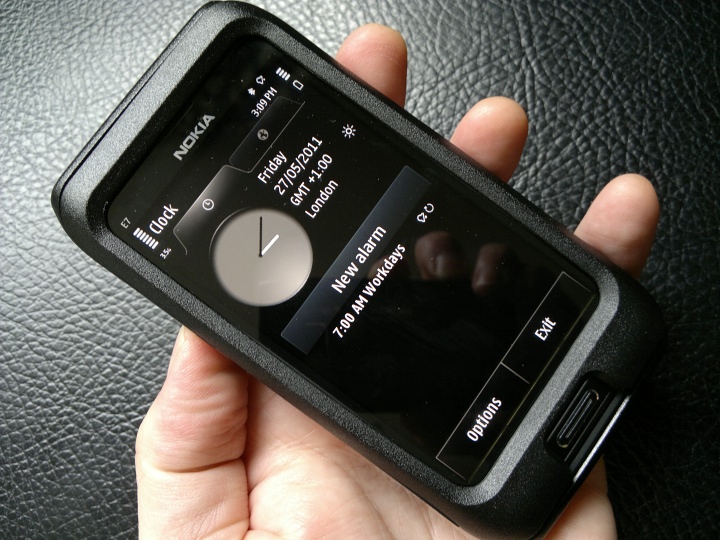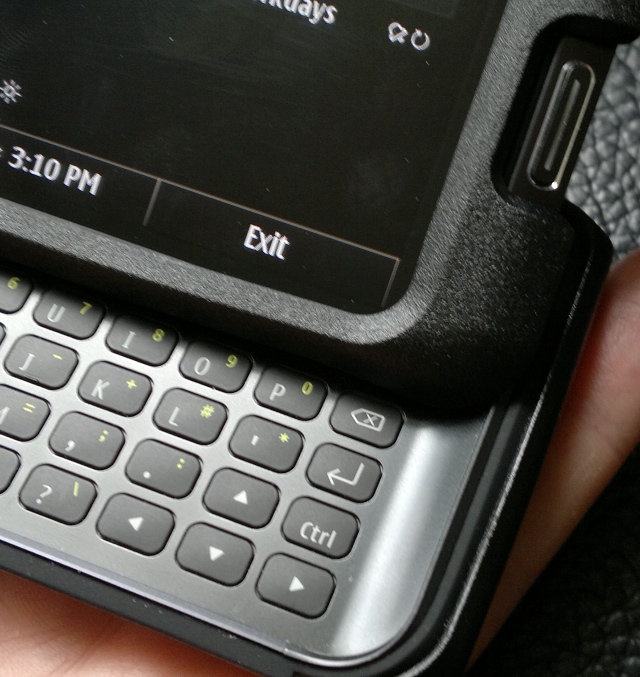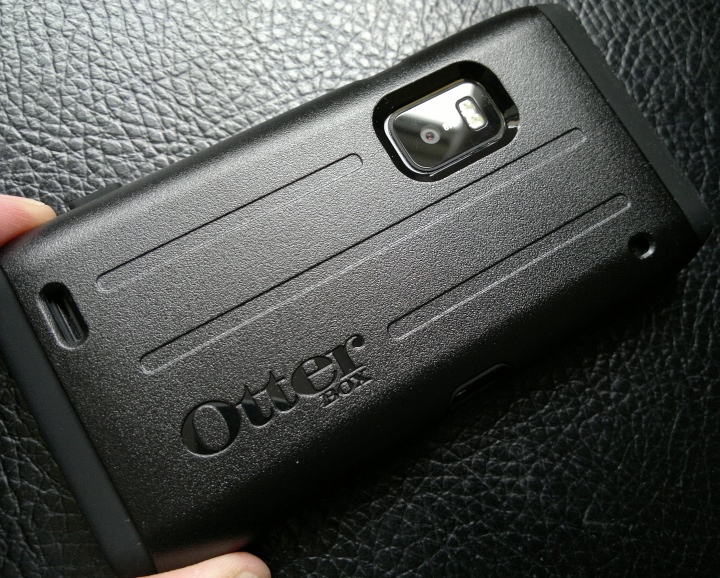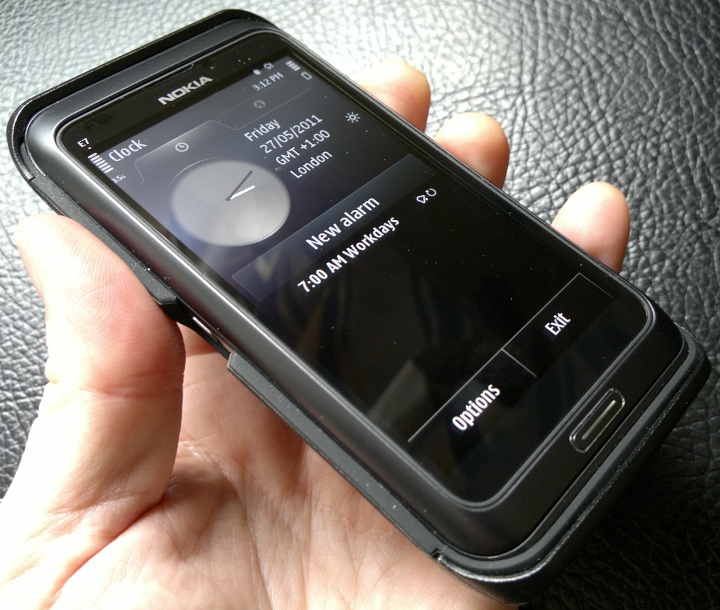Review: OtterBox Commuter for E7
Score:
70%
Professional cases for the Nokia E7 Communicator continue to trickle in - here's OtterBox's 'Commuter' accessory. Fresh from the triumph of the N8 design, how on earth did OtterBox cope with the sliding, hinged E7? And how bulky and/or useable is the end result? Is the form factor a bad 'fit' (pun intended) with the idea of an all encompassing, totally protected phone?
Now - I'm going to break the habit of the year here by saying that an OtterBox case isn't worth buying. BUT, it has nothing to do with build quality or materials and not even that much to do with design. In fact, the failure of the OtterBox Commuter case is almost entirely down to Nokia itself.
You see the very idea of an in-situ, all-enveloping, protective case for a hinged slider form factor is insane in the first place. The form-hugging Commuter for the N8 worked perfectly. Ditto the E72 and C7 versions, which we'll get round to reviewing sometime soon. But how can you case something that has a top section that basically moves to a completely different position 50 times a day?
The usual solution is to stick the phone in a pouch, so you extract it when you want to use it, but the E7 is already large - a pouch would certainly be too large for a belt case. Put simply, the E7 (and transformer devices like it) aren't trivial to case!
A simple option is just to protect the bottom half, adding protection for the corners and for the camera glass, this was the approach Nokia itself took with its CC-3009 that I loved in last week's review. OtterBox has attempted something more ambitious, looking at applying a similar bottom half but also a clip-on sheath for the screen section. Here's the OtterBox Commuter:

As with the other Commuter cases in the series, the main case section is in two parts, hard, moulded polycarbonate on the outside and a silicone sheath inside, to cradle the phone. It's a great system, impressively constructed and is very tightly fitting - it took a minute or two to coax the E7 into the Commuter. The top part literally clips onto the screen and is a bit fiddly to get in place - a good thing the E7's hinge mechanism is strong enough to take all the pressures of case assembly!
Both top and bottom case sections are quite thick, for maximum protection, but there's an obvious bulk penalty - the Commuter means that your E7 is now a whopping 18mm thick:

And it's at this point that some of the E7's physical characteristics come into play to cause problems. The keylock toggle is hard to reach with your finger because it's now so recessed. Ditto the volume control.
The main E7 'Home' key, which Nokia positioned badly, in my opinion, has also necessitated a huge cutout in the Commuter case and the result is inelegant, to say the least:

The quality of the polycarbonate mouldings throughout is impressive though. Here's the bottom of the Commuter, and note the way the silicone sheath is allowed to protrude at the ends, partly for style reasons and partly for end section impact protection:

So we have a bulky solution which also impedes access to key controls. In addition, with the case fully in place I found that opening the E7 was harder than it was normally, the case clips change the hinge angles very subtly.
After a few days of use, I found I preferred leaving the top half off the Commuter completely, leaving the bottom section to do its job and slightly improving access to the E7's side controls, as shown below:

In this mode, the Commuter is effectively doing the same job as Nokia's CC-3009, but with extra bulk and expense. It works, but not as well and I reluctantly have to conclude this is one phone where OtterBox's all-encompassing case philosophy just isn't going to work: something simpler and slimmer is required!
The OtterBox cases continue to be built at the very top of the quality tree, but in this case Nokia's phone designers have given OtterBox one headache too many.
Steve Litchfield, All About Symbian, 23 June 2011
Reviewed by Steve Litchfield at
